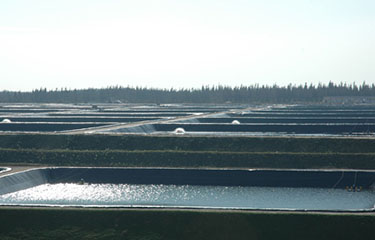Higher profits provide justification for Guolian’s shrimp-farming exit

Guolian Aquatic is expecting a return to big profitability in its initial earnings projections for 2022.
The Guangdong, China-based seafood firm said it is expecting to bank a profit of CNY 27 million to CNY 40 million (USD 4.1 million to USD 6 million, EUR 3.8 million to EUR 5.6 million) for 2022 once its accounting is finalized. The result provides justification for the company’s exit from the aquaculture business and its shift to a focus on processed meals and precooked products for China’s convenience dining sector.
Guolian’s aquaculture arm lost CNY 50 million (USD 7.35 million, EUR 7.05 million) in 2021, and had been loss-making for some time. Overall, the company posted a loss of CNY 13.8 million (USD 2.1 million, EUR 1.9 million) in 2019, but recorded a CNY 269 million (USD 40.3 million, EUR 37.6 million) profit in 2020, and a CNY 464 million (USD 69.6 million, EUR 64.9 million) profit in 2021. Guolian lifted its gross-profit margin from 11.5 percent in 2020 to 15.3 percent in 2021.
Guolian’s overall income rose 19.6 percent to CNY 3.94 billion (USD 575 million, EUR 538.8 million) in 2022, with processed meals accounting for CNY 560 million (USD 81.7 million, EUR 76.6 million), up 36 percent year-on-year. As a percentage of overall income, Guolian’s sales of processed meals have risen from 12.9 percent in 2019 to 16.2 percent in 2020 and hit 18.8 percent in 2021. And Guolian’s processed-meal sales rose 36.1 percent in the first half of 2022, accounting for 23.1 percent of its total revenue.
Looking forward, Guolian stands to benefit from an expansion and consolidation of China’s casual dining scene, according to a research paper published by Chinese brokerage Guohai Securities. Chinese fast-food chains prefer to source pre-cooked products from third parties rather than investing in their own kitchen systems, according to Guohai analysts Xue Bao Hu and Liu Guo Ming. They’re projecting Guolian will post 15 percent annual growth (to 2026) in sales premade or prefabricated meals in the combined foodservice and retail sectors, with meal sales in retail outlets set to grow by 25 percent a year through 2026.
Translated directly as “prefabricated” from Mandarin, China’s processed-meal sector has blossomed as it has been encouraged with subsidies and tax breaks by regional governments, which have invested heavily in this segment of the food sector. Guolian’s key competitor in the sector is the Fujian-based firm Fujian Anjoy Foods, the biggest seller of processed frozen meals in China.
“Guolian has an advantage in the (low) price of its products,” Guohai said, while noting Anjoy spends twice as much as Guolian on research and development …




Share